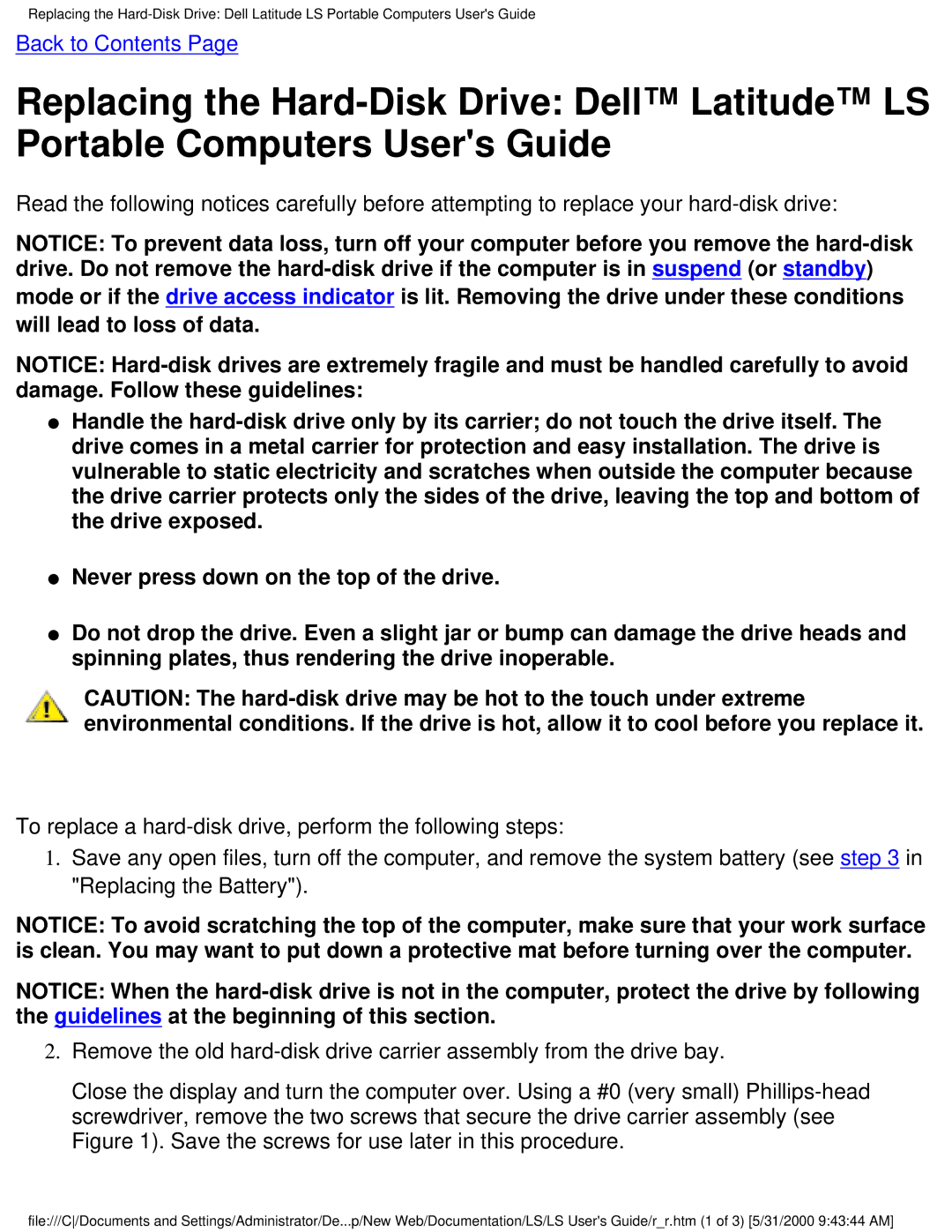Replacing the Hard-Disk Drive: Dell Latitude LS Portable Computers User's Guide
Replacing the Hard-Disk Drive: Dell™ Latitude™ LS Portable Computers User's Guide
Read the following notices carefully before attempting to replace your hard-disk drive:
NOTICE: To prevent data loss, turn off your computer before you remove the hard-disk drive. Do not remove the hard-disk drive if the computer is in suspend (or standby) mode or if the drive access indicator is lit. Removing the drive under these conditions will lead to loss of data.
NOTICE: Hard-disk drives are extremely fragile and must be handled carefully to avoid damage. Follow these guidelines:
●Handle the hard-disk drive only by its carrier; do not touch the drive itself. The drive comes in a metal carrier for protection and easy installation. The drive is vulnerable to static electricity and scratches when outside the computer because the drive carrier protects only the sides of the drive, leaving the top and bottom of the drive exposed.
●Never press down on the top of the drive.
●Do not drop the drive. Even a slight jar or bump can damage the drive heads and spinning plates, thus rendering the drive inoperable.
CAUTION: The hard-disk drive may be hot to the touch under extreme environmental conditions. If the drive is hot, allow it to cool before you replace it.
To replace a hard-disk drive, perform the following steps:
1.Save any open files, turn off the computer, and remove the system battery (see step 3 in "Replacing the Battery").
NOTICE: To avoid scratching the top of the computer, make sure that your work surface is clean. You may want to put down a protective mat before turning over the computer.
NOTICE: When the hard-disk drive is not in the computer, protect the drive by following the guidelines at the beginning of this section.
2.Remove the old hard-disk drive carrier assembly from the drive bay.
Close the display and turn the computer over. Using a #0 (very small) Phillips-head screwdriver, remove the two screws that secure the drive carrier assembly (see Figure 1). Save the screws for use later in this procedure.
